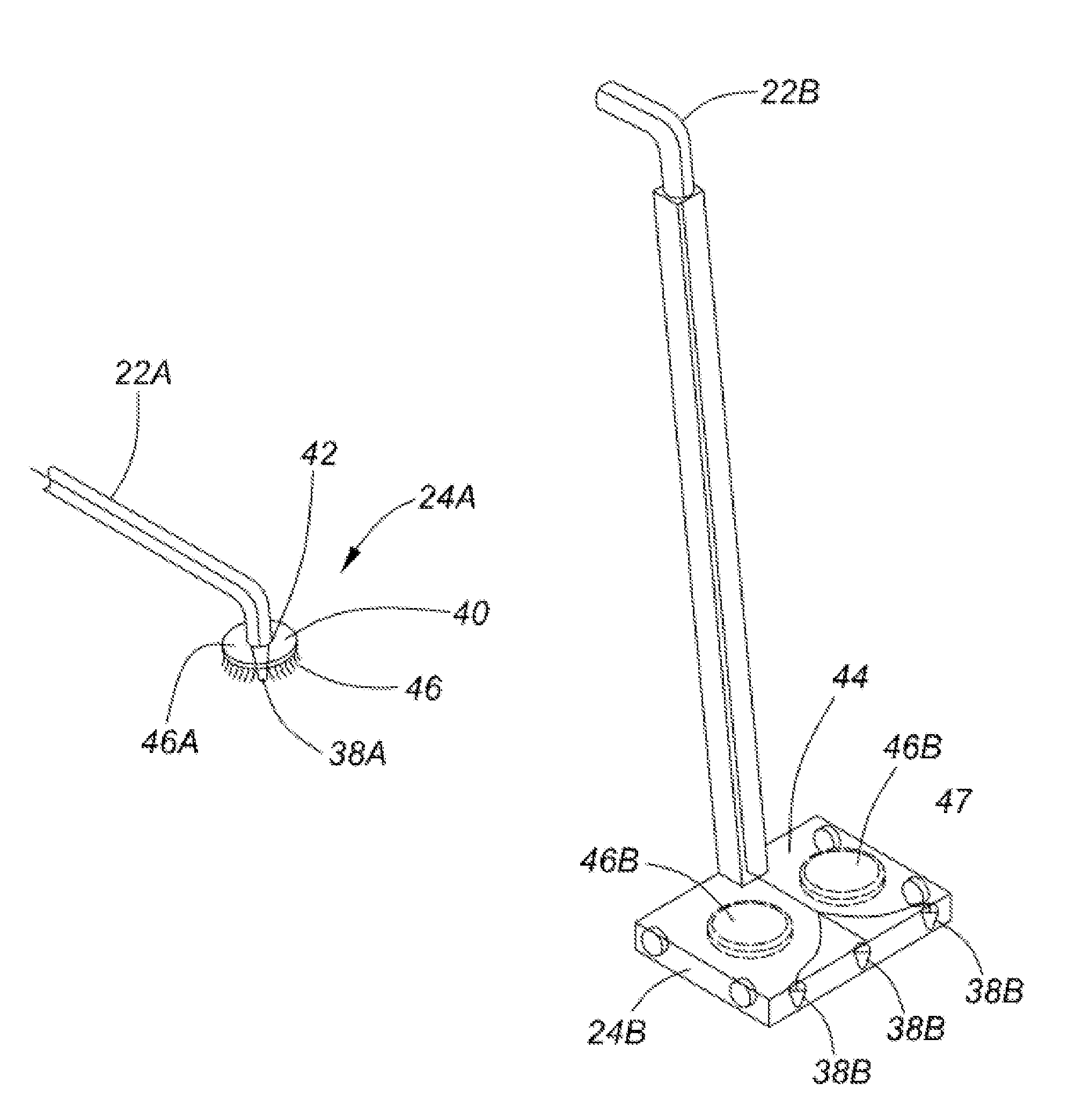Healthcare facility disinfecting system
a disinfection system and health care technology, applied in the field of disinfection systems, to achieve the effect of safe, effective and inexpensive systems
- Summary
- Abstract
- Description
- Claims
- Application Information
AI Technical Summary
Benefits of technology
Problems solved by technology
Method used
Image
Examples
experimental examples
[0064]Effective and optimum conditions for use in the present invention were determined using a laboratory apparatus as generally illustrated in FIG. 4 of the accompanying drawings.
[0065]A single pure colony of each aerobic test bacteria, namely E. coli; Pseudomonas aeruginosa; methicillin-resistant Staphylococcus aureus (MRSA); and vancomycin-resistant Enterococcus (VRE) was inoculated to a Columbia agar plate with 5% sheep's blood. They were incubated at 35° C. in room air for 18-24 hours. From the plate, 4-5 isolated colonies were selected, and suspended in tryptic soy broth to achieve a 0.5 McFarland turbidity standard (1.5×108 cfu / ml) measured using a spectrophotometer. Inoculum was prepared by performing a series of serial dilutions of 0.9 ml 0.85 NaCl broth with 0.1 ml of original 0.5 McFarland inoculum (6×10 fold) to give solutions of 10−1, 10−2, 10−3, 10−4, 10−5, 10−6 and 10−7 cfu / mL.
[0066]Organisms were plated out in triplicate, 0.1 ml of each solution being spread over th...
example 1
[0071]A series of tests as described above was conducted on MRSA ATCC 33592. The microorganism-bearing dishes were exposed in the chamber to an oxygen / ozone mixed atmosphere containing 80 ppm ozone, for 90 minutes at 20° C. and 85% relative humidity. Duplicate test plates were run. 10 μL volume aliquots washed off the plates were serially diluted with inoculum, to final dilution factors 10−2, 10−3, 10−4, 10−5, 10−6 and 10−7. Control plates, not subjected to ozone exposure, were prepared, and the plates incubated for 24 hours as described. The surfaces of the agar plates were eluted to remove the bacterial colonies, and the eluates plated out for examination under a microscope.
[0072]Counting of the active, reproducing colonies of bacteria in the eluate compositions, under a microscope, revealed that the eluates from control plates at dilutions 10−2, had 19 and 11 cfus (duplicate plates), and no cfus from plates of higher dilution, whereas the experimental, ozone-exposed plates yielde...
example 2
[0073]The experiment of example 1 was repeated using the same bacterial strain, but exposing the test plates in the chamber to 50 ppm ozone in oxygen, at 20° C. and 80% relative humidity.
[0074]Counting of the active, reproducing colonies of bacteria in the eluate compositions, under a microscope, revealed that the eluates from control plates at dilutions 10−2, had 374, 415, 414 and 423 cfus (quadruplicated plates), 33, 35, 38 and 37 cfus from control plates at dilutions 10−3, had 4, 1, 2 and 2 cfus at dilution 10−4 and no cfus at higher dilutions. Those from the eluates of treated plates revealed 27, 11, 42 and 58 active cfus at dilutions 10−2, 3, 1, 3 and 5 cfus at dilution 10−3 (quadruplicate plates), and no cfus from plates of higher dilution.
PUM
 Login to View More
Login to View More Abstract
Description
Claims
Application Information
 Login to View More
Login to View More - R&D
- Intellectual Property
- Life Sciences
- Materials
- Tech Scout
- Unparalleled Data Quality
- Higher Quality Content
- 60% Fewer Hallucinations
Browse by: Latest US Patents, China's latest patents, Technical Efficacy Thesaurus, Application Domain, Technology Topic, Popular Technical Reports.
© 2025 PatSnap. All rights reserved.Legal|Privacy policy|Modern Slavery Act Transparency Statement|Sitemap|About US| Contact US: help@patsnap.com



